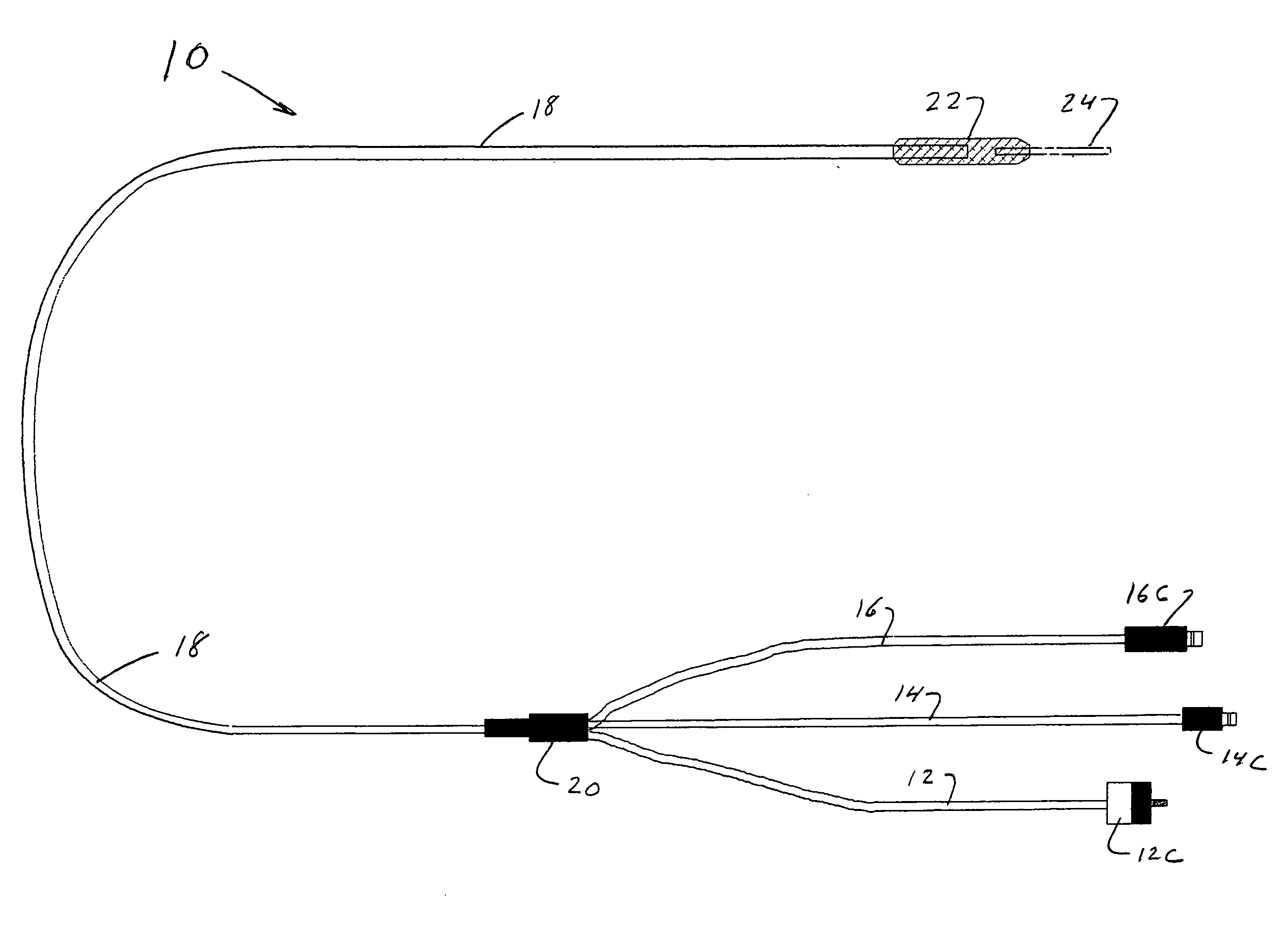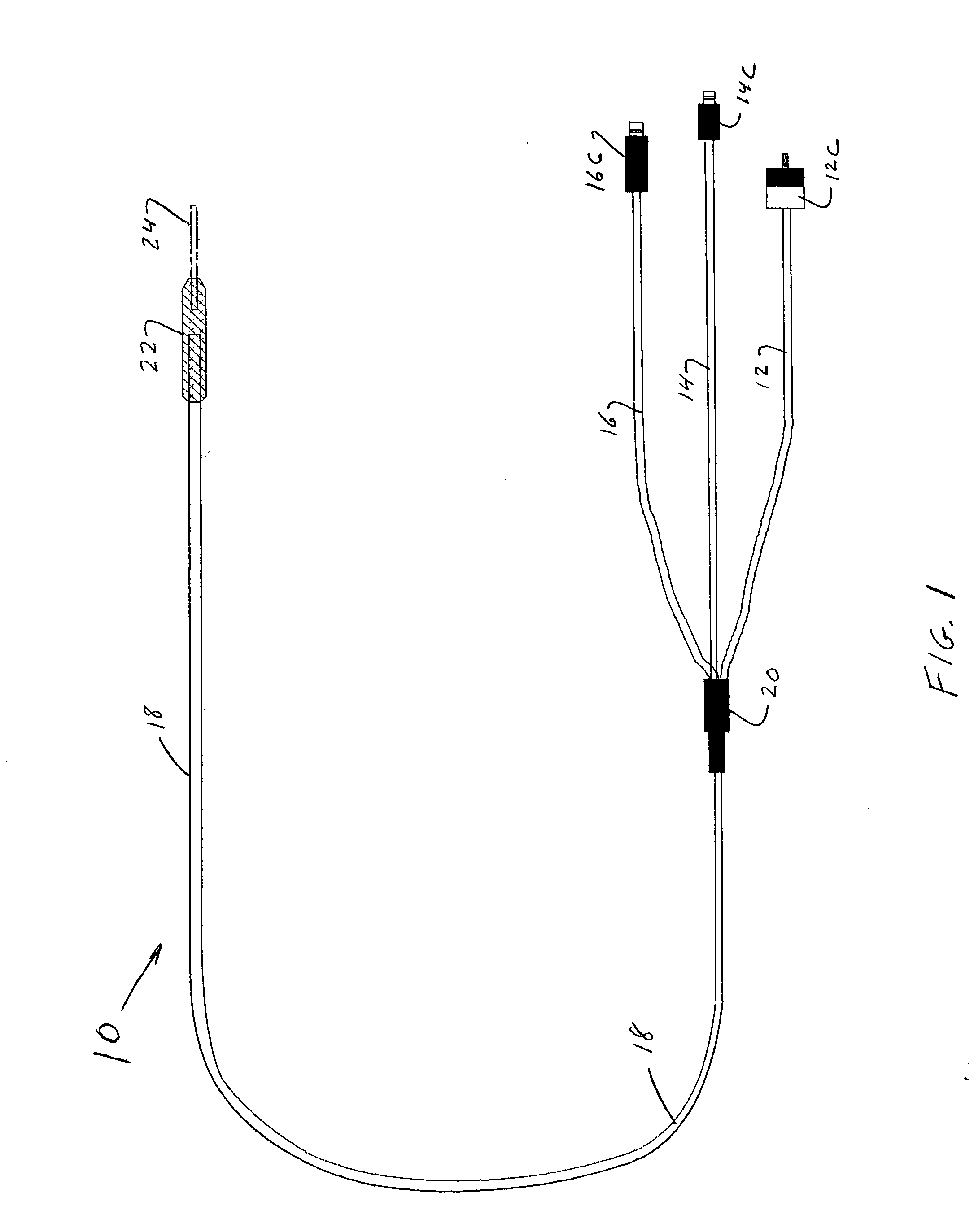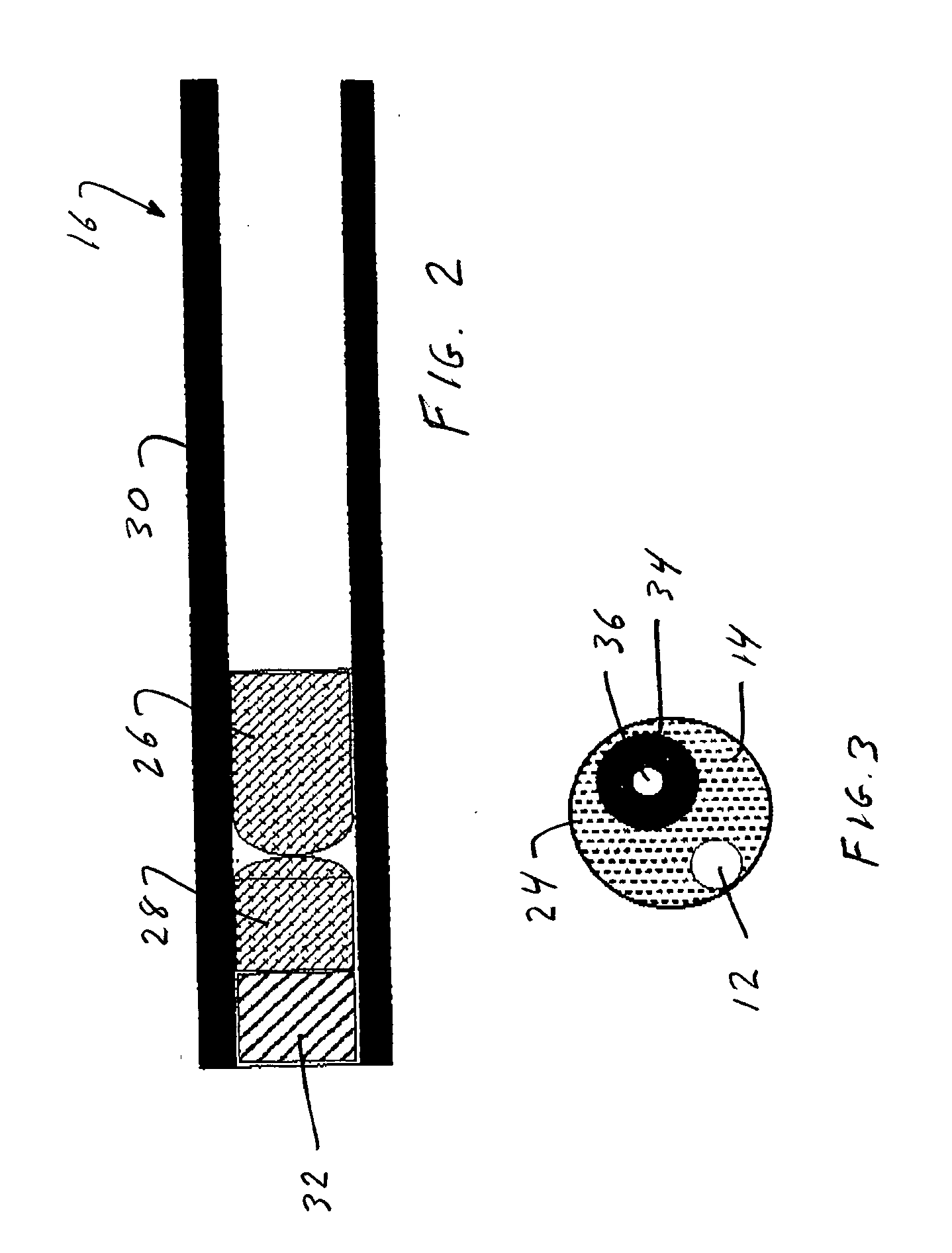Autoclavable endoscope
a technology of endoscope and autoclave, which is applied in the field of autoclavable endoscope, can solve the problems of not providing clear and focused images, known endoscopes tend to lose critical optical characteristics, etc., and achieve the effect of minimizing the change in dimensional characteristics during autoclaving
- Summary
- Abstract
- Description
- Claims
- Application Information
AI Technical Summary
Benefits of technology
Problems solved by technology
Method used
Image
Examples
Embodiment Construction
[0023] The FIGS. illustrate a single embodiment. This endoscope 10 has three main optical guides. They are a laser fiber guide 12, a set of fibers to provide a light guide 14 and an image guide 16 having approximately 10,000 light elements to provide 10,000 pixels. These three optical guides 12, 14 and 16 are held in a plastic jacket 18. This jacket 18 extends from a trifurcation zone 20 to the hand piece 22 near the distal end of the endoscope 10.
[0024] Distal of the hand piece 22 is the stainless steel cylindrical probe 24. The three light guides 12, 14, 16 extend through the probe 24 and are flush with the distal end of the probe 24.
[0025] Proximal of the trifurcation zone 20, the three optical guides are in three separate jackets extending to appropriate connectors 12C, 14C, 16C of the optical systems to a laser, a light source and a camera, respectively.
[0026] Specifically, connector 12C at the distal end of the laser fiber guide 12 permits coupling to a laser. A connector 1...
PUM
 Login to View More
Login to View More Abstract
Description
Claims
Application Information
 Login to View More
Login to View More - R&D
- Intellectual Property
- Life Sciences
- Materials
- Tech Scout
- Unparalleled Data Quality
- Higher Quality Content
- 60% Fewer Hallucinations
Browse by: Latest US Patents, China's latest patents, Technical Efficacy Thesaurus, Application Domain, Technology Topic, Popular Technical Reports.
© 2025 PatSnap. All rights reserved.Legal|Privacy policy|Modern Slavery Act Transparency Statement|Sitemap|About US| Contact US: help@patsnap.com



